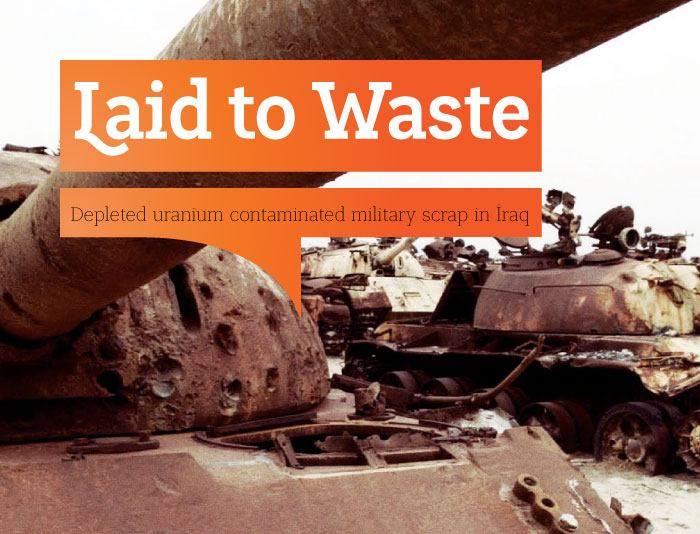The Center for Constitutional Rights (CCR) has submitted a Freedom of Information Act (FOIA) request to the United States Department of Defense (DOD) and the State Department on behalf of itself and Iraq Veterans Against the War (IVAW) seeking the firing coordinates of weapons used in Iraq that contained depleted uranium (DU). Two PAX-reports played a part in this request.
As the US launches new military actions in the Middle East, the groups say getting information about the military’s use of DU in weaponry and its long-term effects is as urgent as ever. According to “In a State of Uncertainty,” a report by PAX, Iraq has been subject to the largest use of DU munitions of all areas of conflict and test sites, conservatively estimated to be at least 440 metric tons, though the United Nations Environment Programme has estimated an amount up to five times that based on satellite imagery. Iraqi civilians thought to have been exposed to DU and remaining debris have suffered high rates of cancer and birth defects and U.S. veterans report unexplained illnesses.
“DU is but one example of the toxic legacy left by our wars in Iraq,” said CCR Attorney Jeena Shah. “Veterans who served in Iraq are suffering side effects, while many Iraqis still live surrounded by piles of metal debris left over from the war and with soil and ground water potentially contaminated by DU. The only way to deal with its effects and to ensure it is cleaned up is to have a full accounting of where weapons containing DU were deployed.”
Genetic damage
DU is a byproduct of enriched uranium and is used in armor-piercing weapons due to its high density. When DU hits a target, its fragments burn and vaporize into a fine dust. If a person inhales, ingests, or is exposed by radiation to DU, radioactive material can be absorbed into the lungs, bone, kidney, skeletal tissue, reproductive system, brain, and other organs. A report recently published by the International Coalition to Ban Uranium Weapons concluded after reviewing approximately fifty peer-reviewed studies on DU that it is clearly a genotoxic agent, known to be involved in the development of cancer and potentially responsible for genetic damage. Some of the wreckage left behind from the war has entered the unregulated trade in scrap metal, sometimes even made into cooking pots. No safe levels of exposure to DU have been established, and researchers advise that all exposure should be avoided. Iraq and other UN member states have called for the banning of DU and the issue will be before the United Nations in October.
Said Maggie Martin, Organizing Director of IVAW, “Veterans have been fighting for decades to have our injuries recognized by the U.S. government- from Agent Orange to Military Sexual Trauma. We were promised healthcare in return for our service, and we deserve to know if we’ve been exposed to depleted uranium. This is an important matter of health for over two million veterans and for the people of Iraq and Afghanistan who are experiencing the worst of the toxic legacy of war.”
Cleaning up
Laid to Waste, a report by Wim Zwijnenburg of PAX, details the difficulty of limiting civilian exposure to DU in the absence of reliable information about locations where it was used and the limited efforts to address the issue. “Nobody takes responsibility for cleaning up the toxic waste”, says Zwijnenburg. “Not the Iranian government, not de countries that used DU. Iraq has requested the United Nations for support in cleaning the toxic legacy. This is expensive and complicated work. Specially if people don’t really know where weapons containing DU have been used. It is irresponsible that military forces keep on using this, even though the health risks are insufficiently known and nobody is cleaning up the toxic contamination.”




